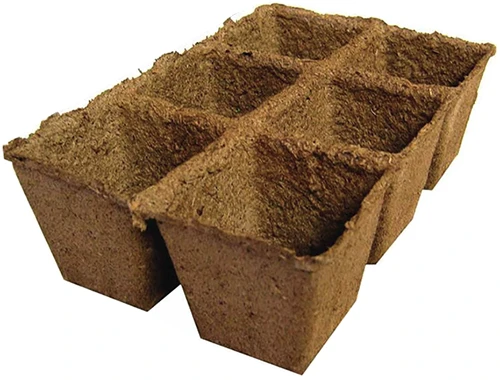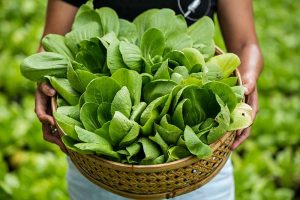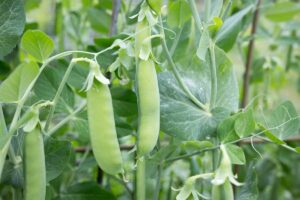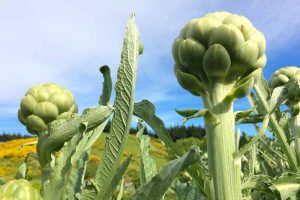Salsola soda
There are foods that you get a single bite of, and you just know you’d be willing to do anything for more. Agretti was one such vegetable for me.
I first had it lightly tossed in olive oil, sea salt, and lemon as a side dish at an Italian restaurant.
I wasn’t even done with my meal before I was thinking about the next opportunity to get my teeth on it again.
I know, not very “living in the moment” of me, but I was hooked and I needed my next fix.
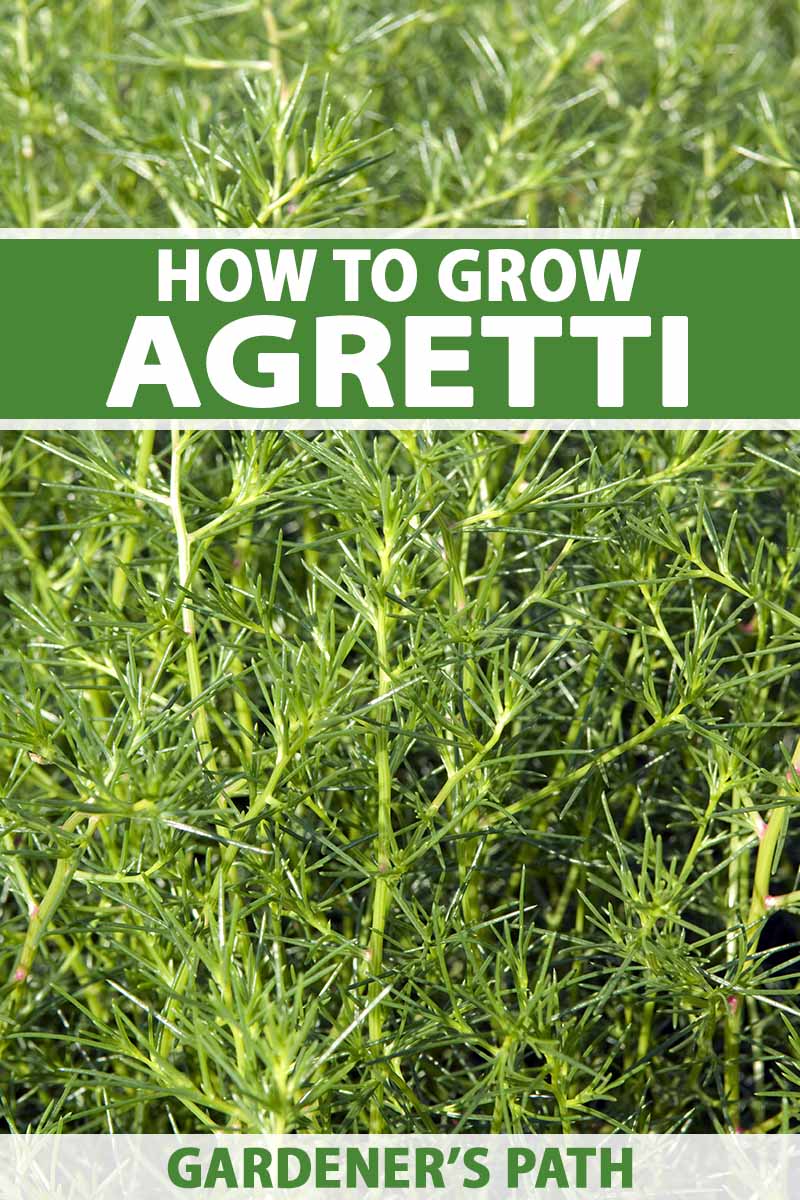
We link to vendors to help you find relevant products. If you buy from one of our links, we may earn a commission.
This led me on a journey to find seedlings I could purchase, which proved to be impossible in my area.
Later, I learned how to germinate the seeds so I could have all the agretti I wanted, but not before discovering some excellent alternatives, such as samphire – another vegetable that I would eat every single day if I could.
Now, I still dream about my next chance to eat agretti, but that opportunity is usually later that same day after I go grab a bunch out of my garden, rather than having to search far and wide while waiting weeks or months.
If you’re looking to grow this plant, no doubt you’ve been bitten by the agretti bug, too. Welcome!
Growing it is much easier than you might expect, though there are a few things you need to get right to succeed.
This guide will explain all that and more. Here’s what to expect:
What You’ll Learn
Looking to become your own personal agretti source? I totally feel you.
What Is Agretti?
Salsola soda, opposite-leaved saltwort, opposite-leaved Russian thistle, barba di frate, monk’s beard, roscano, lischi, barilla plant, glasswort, land seaweed… Whatever you call agretti, it’s one unique plant.

By the way, lots of other plants go by the name saltwort, so don’t confuse them. The suffix “wort” simply means plant, so any plant that thrives in salty environments may be labeled as saltwort.
The samphire I mentioned above, for example, are plants in the Salicornia genus, which can all be called saltworts. Really, any species in the Salsola, Sarcocornia, Suaeda, or Tecticornia genera can go by the name, so be sure to check the botanical name to be sure before you buy.
You can find S. soda across the globe, though it originated in parts of Asia, Europe, and Africa. Now, it has naturalized in most coastal parts of Europe, as well as the Pacific coast in North and South America.

In some areas with brackish water, it’s even considered to be potentially a nuisance or invasive. If only it were invasive in my yard… (I kid, I kid!)
On the east coast of North America, you’ll usually find its close relative S. kali instead.
The more drought-tolerant Russian thistle was introduced in the late 1800s and has also spread across the western US, becoming extremely invasive in desert regions where other plants can’t compete.
S. soda grows to about two and a half feet tall with a central stalk and opposite leaves that look a bit like fleshy rosemary leaves.
It forms small yellow flowers in the summer at the base of the leaves, which give way to fruit after successful pollination. The fruits that contain the seeds are buoyant in water, so they float along until they find a new spot to set up shop.
Cultivated plants have much longer leaves than wild ones, which tend to be short and stumpy.
You can let this plant do its thing in USDA Hardiness Zones 8 to 11, but those in Zones 7 and below will need to grow it as an annual.
Cultivation and History
This plant – which, in case you haven’t already gotten the hint, I’m a huge fan of – is popular in Italian and Spanish cuisine, and it’s commonly cultivated or foraged there.
People in Japan caught onto the fantasticalitude (definitely a real word) of this plant’s near relative S. komarovii, and it’s a common ingredient in Japanese cuisine.
Brits recently caught onto the joy after chef Jamie Oliver sang the praises of S. soda. The rest of the world? They’re still mostly waiting to catch onto Salsola. And they’re missing out.
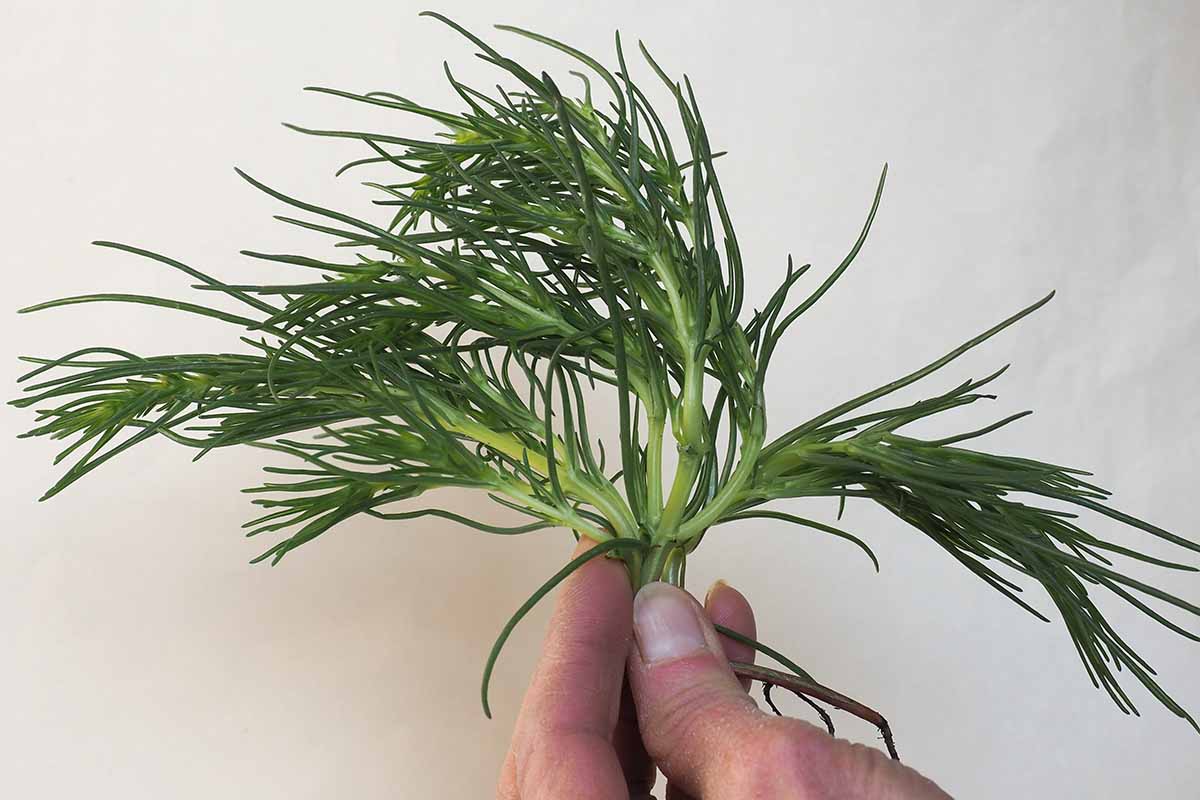
Why isn’t it more appreciated elsewhere? This plant first became popular in Spain and Italy, where it was cultivated, burned, and refined to make soda ash.
The alkali soda ash was a key element in making stuff like glass and soap, so they needed a lot of it, and agretti fit the bill.
The saltier the soil the plant grew in, the more sodium in the plant, and sodium bicarbonate is what artisans and soapmakers were after.
In the early 1800s, we figured out different ways to make soda ash, and thank goodness, because that’s when the plant started becoming a popular part of cuisine in the area where it was cultivated.
S. soda is still cultivated all over the place in Spain and Italy today, but not so much elsewhere. Unless you grow your own!
Propagation
If you live in Italy, Spain, or Portugal, you might be able to find seedlings at the store. Otherwise, you’ll probably have a hard time. But no matter!
You can propagate agretti from seed, even if you don’t have a salty marsh for the seeds to float around in.
Or, if you have a friend growing this marvelous veggie already, you can divide some of their plants.
From Seed
Agretti seeds are a bit of a challenge to start.
The catch is that the plants need cool weather to grow well, and the seeds don’t stay viable long enough to be sown in the fall, so they must be started in the spring.
If you live in a region with short or hot springs, you’ll need to start the seeds indoors.
Germination rates are low and only about half of the seeds you sow will germinate.
The solution? Just sow twice as many as you need. If you end up with more seedlings than you need, you can toss the extras out. Or call me, and I’ll generously take them off your hands.
Sow seeds in place after the last projected frost date but when there are at least 50 days ahead with temperatures under 75°F or so. If you don’t have 50 days of springtime weather above freezing but below 75°F, start seeds indoors to get a head start.
Either way, the seeds should be sown about a quarter-inch deep. Water carefully so you don’t disturb the seeds.
Sow them in cells filled with seed-starting mix, and add a few seeds per cell. Thin them out to one or two seedlings per cell after they germinate.
Place the containers under grow lights for at least eight hours per day and keep the soil consistently moist.
I’m a huge fan of CowPots because they’re biodegradable and made out of waste, so they have a low impact on the environment.
They also reduce the risk of transplant shock because you don’t need to remove the seedlings from their containers to transplant, you just put the container straight in the ground.
Arbico Organics sells six-cell trays in packs of three, 50, and 120.
Assuming you did everything right, within one to three weeks (depending on the light and temperature), you should start seeing sprouts.
From Divisions
After a few years of growth, these plants tend to spread. You can dig up some of the clumps and replant them.
To do that, take a spade and force it directly down into the clump. Lift the spade back out and dig down on the sides of the plant, about an inch out from the drip line.
Stick the spade back into the first slice that you made and use the leverage to work the clump out.
Replant as you would a seedling.
Transplanting
Whether you start seedlings indoors or manage to find some at a nursery, the process for transplanting is pretty straightforward.
If you don’t have loose, rich soil, fix sand or clay by working well-rotted compost in six inches down. Dig a hole twice as wide as the growing pot and gently remove the seedling if it’s not biodegradable.
Set the seedling in the hole and fill in around it with some of that amended soil.
Plants should be placed eight inches apart. Water well so the soil feels like a well wrung-out sponge and keep it that moist at all times.
How to Grow
Agretti grows along the coastline in brackish water, but that doesn’t mean you need to move to the seashore to grow this delicious plant. Though, if you decide to, I don’t blame you one bit…
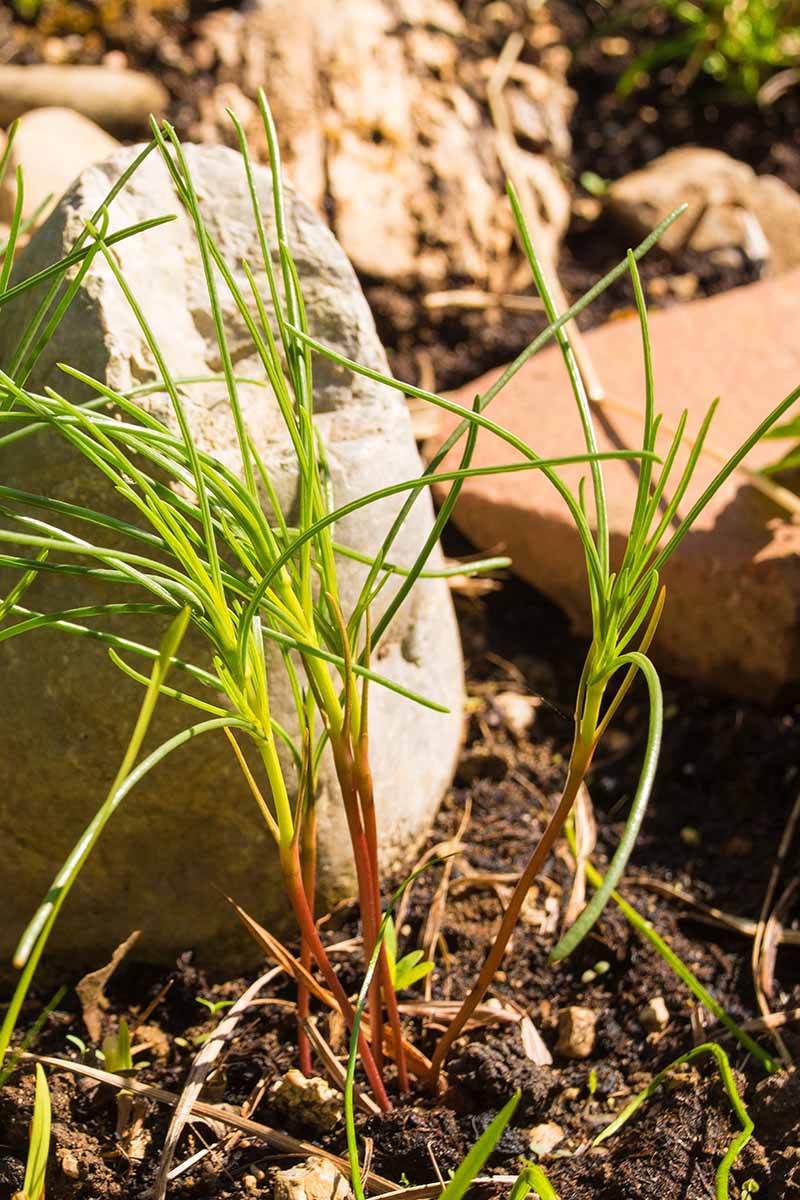
Marvelous old monk’s beard can grow perfectly well in your garden with fresh water.
As you might imagine, it’s tolerant of overwatering, but it can also handle some drought. However, with drought periods, the leaves tend to grow shorter and more bitter.
Try to aim for something right in the middle. Keep the soil consistently moist but not wet. As a general rule, be extra careful not to water the leaves of these plants. Water at the soil level.
Agretti isn’t particularly prone to diseases, but it’s always better to be safe than sorry by introducing too much moisture to the foliage or splashing the leaves, right?
Agretti loves the sun. Let it bask in at least six hours per day, more if it’s available.
Some plants, like nightshades in the Solanaceae family, grow better next to agretti. That’s because monk’s beard sucks up sodium from the soil.
Plant them together, and then whip up a side dish of agretti, tomatoes, and chilis once everything is ripe.
There’s no need to fertilize your plants and it’s best to keep the soil somewhat neutral. But really, a pH within the range of 6.0 to 8.0 is fine.
Agretti grows well with other moisture-loving plants, such as asparagus, celery, watercress, peppers, and most brassicas, including cabbage.
Avoid herbs and veggies that like it dry. Sage and agretti will never be best friends.
Growing Tips
- Plant in full sun.
- Keep the soil moist and water at soil level.
- Don’t fertilize plants.
Managing Pests and Disease
Honestly, if this delicious wonder was difficult to grow, I’d still grow it. I think it’s that delicious. Lucky for me, it’s pretty unbothered by pests and diseases.
Pests
There are just a few common pests that might make a meal of your crop:
Cabbage Loopers
Cabbage loopers (Trichoplusia ni) don’t just feed on cabbage, despite the name.
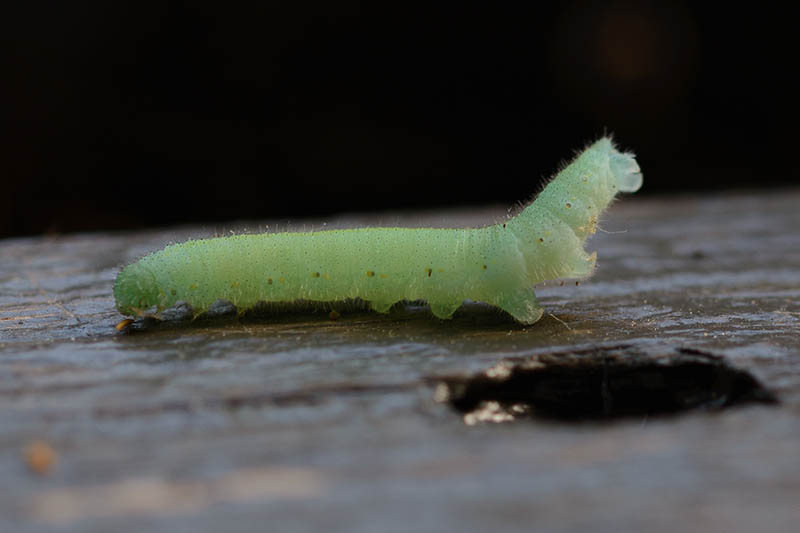
They like all kinds of herbaceous plants, including agretti. We have a helpful guide that will talk you through identifying and addressing a cabbage looper infestation.
Slugs and Snails
I’ve heard contradictory information about slugs and snails nibbling on agretti.
Some people, including me, say that mollusks don’t care at all about the plant. But others say that slugs will go for the young leaves.
If you find that’s the case, use your go-to slug solution or check out our guide to find tips for managing slugs and snails.
Disease
I’ve never encountered a disease when growing agretti, and no one I know who is growing it has either. It’s pretty resistant to disease, it seems.
It’s possible to drown the plant, though. I know, that seems weird, but Salsola soda grows in areas with loamy soil and moving water. Stagnant water and heavy clay will smother the roots, depriving them of oxygen.
Don’t overwater, and don’t plant in clay soil, and you should be fine.
Harvesting
Snip off the leaves as they grow. They’ll grow back as long as the weather is favorable, and you can have a few more harvests before the end of the growing season.

Usually, you can bring in your first harvest about six weeks after sowing the seeds, when the leaves are about four inches tall.
Once you cut the leaves down, the plant branches, and you get thicker growth for the next time around.

At the end of the year, you can pull the plant up roots and all or just cut it down to a few inches above the ground and wait for it to return the next year.
Or, if you don’t mind missing out on the last harvest of the year, let the plant go to seed. While it doesn’t self-seed aggressively, you’ll probably see a few new plants the following year.
Preserving
If your agretti cup runneth over, you can freeze the leaves.
Just blanch them quickly in boiling water for a minute and then dip them in ice water to stop the cooking process.
Dry the leaves, stuff them in a resealable bag, press out any excess air, and toss them in the freezer.
You can also quick-pickle them by rinsing them, packing them in white wine vinegar, sugar, water, and your favorite spices, and sticking them in the fridge in a jar. They’ll last for weeks this way.
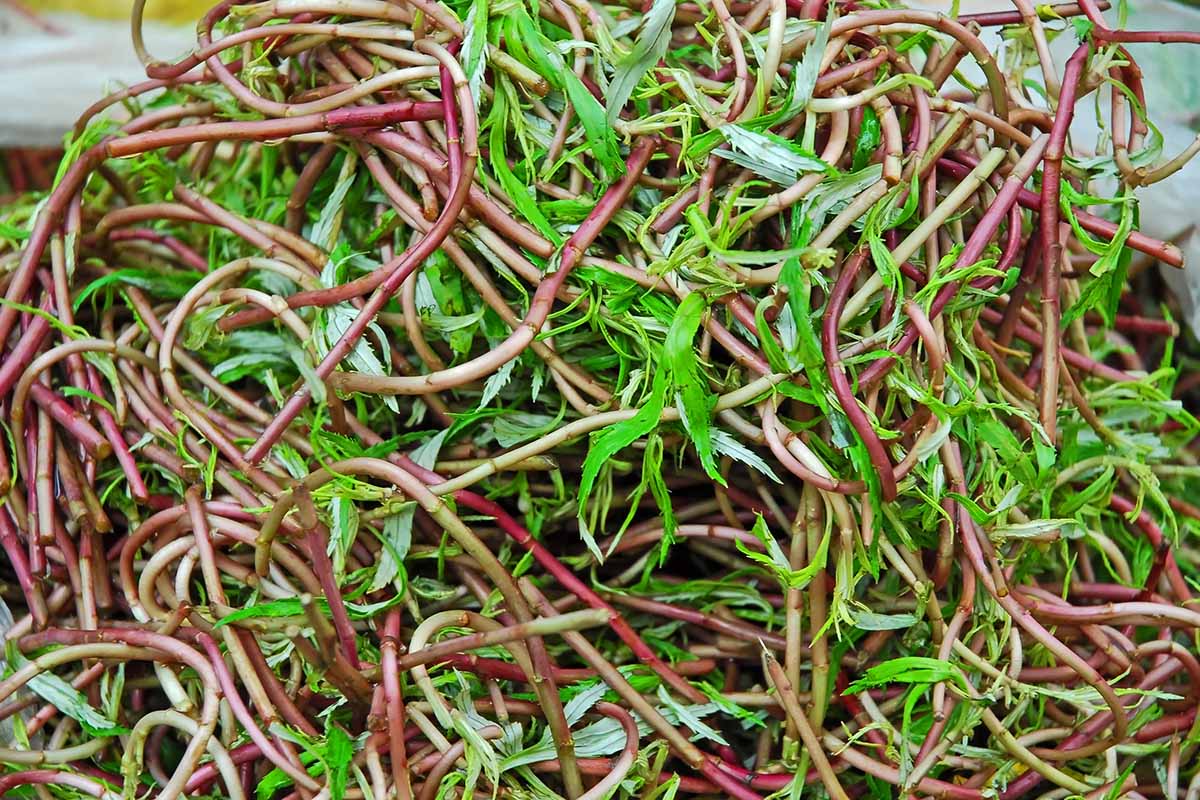
Otherwise, wrap the leaves in a paper towel and stick them in a plastic bag. Store them for up to a week in the crisper drawer of your refrigerator. I mean, if they last that long.
At the end of the year, when you do your last harvest, keep the roots attached (as they do in Italy) and wrap them up as described above.
They’ll last for several weeks in the fridge when they have the roots attached.
Recipes and Cooking Ideas
I’ve heard agretti described as tasting somewhat like spinach.
I guess that sort of captures the base flavor, but it’s slightly more bitter with a saltiness that tastes like the ocean, not like something out of a salt cellar.
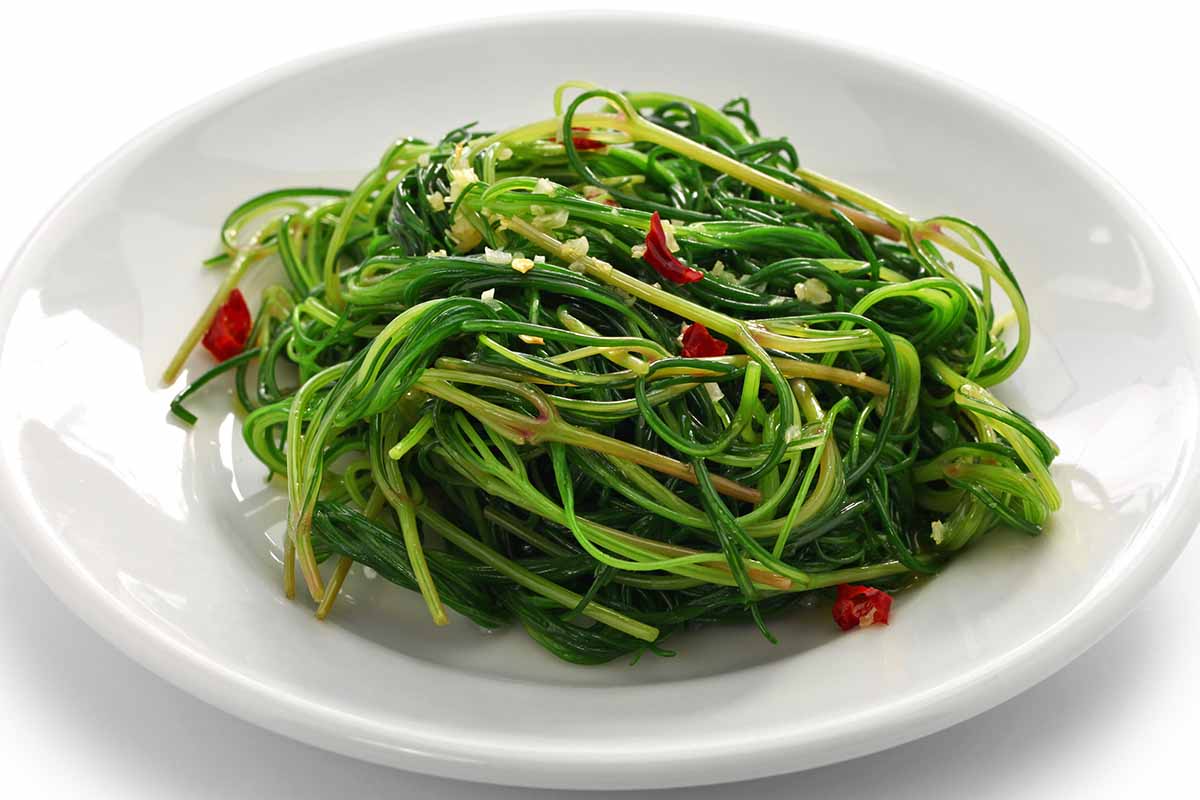
It’s sort of like a milder seaweed with a more toothsome bite.
So long as you don’t cook it for too long, it has a fleshy, crisp texture that snaps pleasantly between the teeth.
Speaking of cooking, you can eat the young leaves raw, but the older leaves should be cooked briefly. This isn’t a vegetable you need to dress up to make it tasty.
It’s as simple as sauteing it with some olive oil, lemon, and maybe a little salt and pepper, and you’re done.

The leaves are fantastic fried up in an air fryer and dressed with some salt and olive oil. Try agretti instead of popcorn next time you’re watching a movie at home. Trust me, it will be a hit.
Quick Reference Growing Guide
| Plant Type: | Herbaceous vegetable | Maintenance: | Low |
| Native to: | Africa, Asia, Europe | Tolerance: | Moving water, drought |
| Hardiness (USDA Zones): | 8-11 | Soil Type: | Loamy, (loose, rich) |
| Bloom Time: | Spring, summer | Soil pH: | 6.0-8.0 |
| Exposure: | Full sun | Soil Drainage: | Well-draining |
| Time to Maturity: | 50 days | Attracts: | Bees |
| Spacing: | 8 inches | Companion Planting: | Asparagus, cabbage and other brassicas, celery, peppers, watercress |
| Planting Depth: | 1/4 inch (seeds), same depth as original container (seedlings) | Avoid Planting With: | Lavender, rosemary, sage |
| Height: | 24 inches | Order: | Caryophyllales |
| Spread: | 18 inches | Family: | Amaranthaceae |
| Water Needs: | Moderate | Genus: | Salsola |
| Common Pests and Disease: | Cabbage loopers, slugs and snails; root rot | Species: | Soda |
Agretti Is Worth its Weight in Gold
Agretti is amazing. My mouth is watering just writing this guide.
I’ve heard it described as difficult to grow from seed, but if you just plan to start twice as many seeds as you think you’ll need, it’s really not much of a challenge at all.
Once you have it going in the garden, your job is basically done.
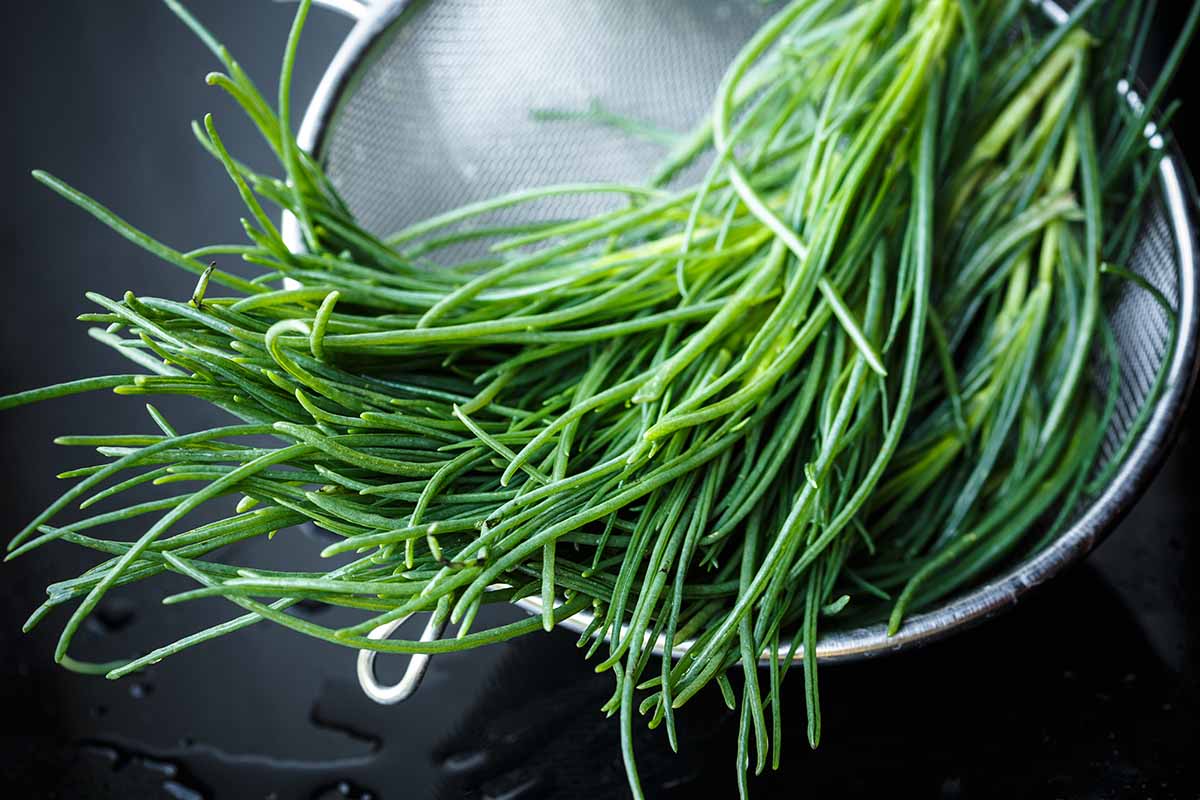
Now it’s time for the good stuff. Tell me how you like to use your agretti. Do you cook it up simply? Toss it in a stir fry? Nibble it raw? I need the details. Share in the comments so I can try them all.
Looking for some more not-so-common herbs and veggies to add to the mix? Give these guides a read next:
